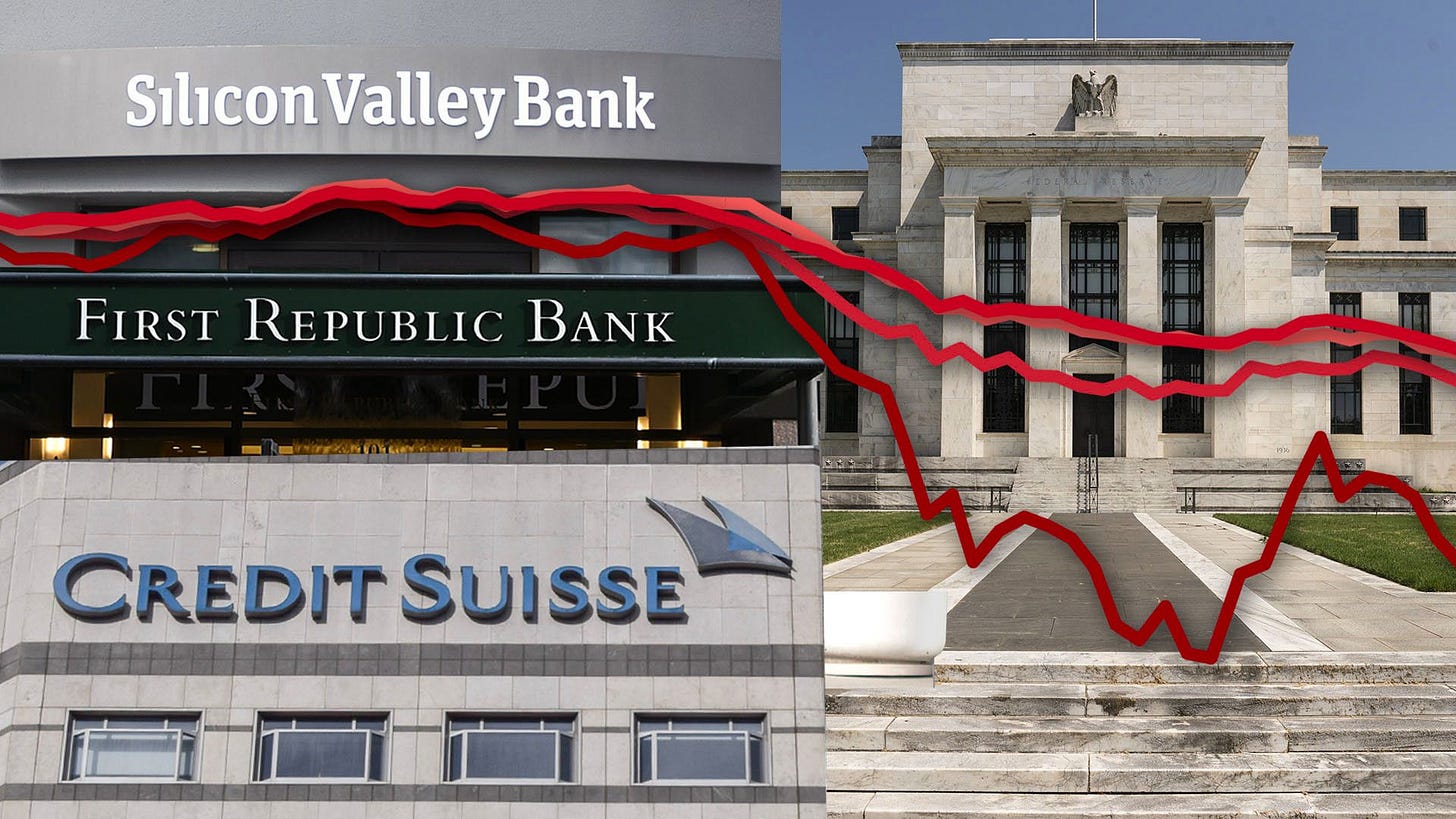Banking Challenges in 2023
Introduction
According to a recent report from *The New York Times*, banks are shutting down personal accounts abruptly and without warning. This alarming trend is a response to the worsening credit crisis, causing financial distress for many Americans. The banks' primary goal is to mitigate the risk of losses and failures, even if it means leaving individuals without access to their funds.
The fifth bank to succumb to financial challenges
The closure of Citizens Bank in Sac City, Iowa, on November 3, 2023, marks the fifth bank to succumb to financial challenges this year, adding a layer of complexity and concern to the stability of the US banking sector. This unsettling trend, coupled with the closures of four other banks earlier in the year, draws ominous parallels to the events that unfolded leading up to the 2008 Global Financial Crisis (GFC).
The frequency and geographic diversity of these closures, involving banks across various regions, amplify the echoes of the 2008 crisis. The widespread impact, including the closure of the first bank in Iowa since 2011, suggests a systemic issue rather than isolated incidents. This resemblance to the early stages of the 2008 GFC, where financial institutions faced mounting challenges, raises questions about the overall health of the banking industry.
Each closure represents a domino falling in a sequence, mirroring the interlinked vulnerabilities that characterized the 2008 crisis. While the specific reasons for each closure may vary, the underlying theme of financial distress and undisclosed losses is reminiscent of the subprime mortgage crisis that triggered the 2008 GFC.
Iowa Trust & Savings Bank stepping in to take over Citizens Bank's assets and deposits reflects a reactive measure to stabilize the situation. However, such interventions, while attempting to prevent immediate fallout, may strain acquiring banks and potentially contribute to a cascading effect as they grapple with absorbed liabilities.
The regulatory response, including the investigation by the Federal Deposit Insurance Corporation (FDIC) and the Iowa Division of Banking (IDOB), reinforces the notion that these closures are not isolated incidents but part of a broader issue. The regulatory scrutiny and interventions, such as the consent order and the appointment of an independent consultant, bear resemblance to the regulatory actions taken in response to the systemic issues leading up to the 2008 GFC.
Comparing the current situation to the 2008 GFC, it's essential to note that the scale and intricacies of the events leading to the previous crisis were complex and multifaceted. However, the parallels in terms of undisclosed losses, regulatory investigations, and a series of bank closures underscore the potential gravity of the current trend.
In summary, the closure of Citizens Bank and the four other banks this year reflects a worrisome pattern in the US banking sector, reminiscent of the events preceding the 2008 GFC. The frequency, geographic diversity, and regulatory responses suggest a developing domino effect that may have broader implications for the financial stability of the banking industry, raising concerns about the potential for a crisis of a scale comparable to or exceeding that of 2008.
Financial Distress and Anxious Households
Numerous institutions find themselves in challenging situations as the financial sector continues to deteriorate. A recent survey indicates that US households are increasingly anxious about their financial situations and the bleak economic outlook for 2024. Startlingly, 36% of Americans have no savings and 65% report that their household expenses have risen in the past year, while only 25% have seen an increase in income.
Concerns about Consumers' Financial Health
The precarious financial conditions have led to concerns about consumers' financial health, especially as credit conditions tighten and unemployment rises. *Clever Real Estate's* survey revealed that 51% of Americans would run out of money within a month if they lost their income, and 29% would run out of money in a week or less.
Increasing Account Closures
The report highlights a significant increase in individuals losing access to their bank accounts and credit cards each month. Banks, not disclosing precise data, are observed to be taking such actions based on a surge in suspicious activity reports (SARs), leading to abrupt terminations of accounts without sufficient warning.
Severe Consequences
The consequences of account closures are severe, affecting individuals' ability to pay bills on time and causing credit scores to suffer. Delinquent customers face the highest risk of account shutdown, and the overall impact on businesses and individuals can be detrimental, leading to struggles in making payroll, explaining financial difficulties to vendors, and coping with emergencies.
Tightening Lending Standards and Credit Crisis
The credit crisis is further exacerbated by the tightening lending standards of banks. Interest rate hikes have made loans more expensive, and access to credit is dwindling for consumers just as the need for financial support is rising due to waning pandemic aid and inflation.
The Federal Reserve's Senior Loan Officer Opinion Survey indicates that banks have cut millions of lines of credit in the third quarter, affecting various sectors of the economy. Commercial real estate loans, residential real estate, credit cards, automotive, and other business loans have all seen tighter lending standards.
Challenges and Potential Recession
The decline in bank deposits and the poor performance of US bank stocks add to the challenges, creating a perfect storm for a potential recession in 2024. The chaotic credit cycle, exacerbated by easy monetary policy and reckless lending during the pandemic, has led to a surge in defaults and a strain on the financial system.
The sudden shift from quantitative easing to tightening has left banks vulnerable, and the expected wave of defaults on commercial real estate loans poses additional threats. The current high interest rates, coupled with rising delinquency rates, contribute to uncertainty and may lead to more bank failures in the coming months.
Conclusion
In conclusion, the current financial landscape is marked by many factors, including abrupt bank account closures, tightening credit conditions, and the looming threat of a recession. The consequences of these trends are already affecting individuals, businesses, and the broader economy, raising concerns about the effectiveness of current monetary policies and the potential for a more severe financial crisis in the near future.
Like, Subscribe, and Share to Spread the Word!
If you found this analysis informative and eye-opening, we invite you to like, subscribe, and share this video to help us spread the word. Together, we can build a community of Financial Anarchy advocates who are dedicated to promoting financial literacy and advocating for sound monetary policies. By amplifying our message, we can empower individuals to take control of their financial well-being and contribute to a more equitable and sustainable future.
Support Our Work with a Bitcoin Donation
We also offer the opportunity to support our work and help us continue building the Financial Anarchy community. If you would like to make a contribution, we gratefully accept donations in Bitcoin. Your support will enable us to create more educational content, engage in meaningful activism, and further our mission of challenging the status quo. To donate, please use the following Bitcoin address:
Thank you for joining us on this journey of understanding and change. Together, we can shape a brighter financial future for all.











